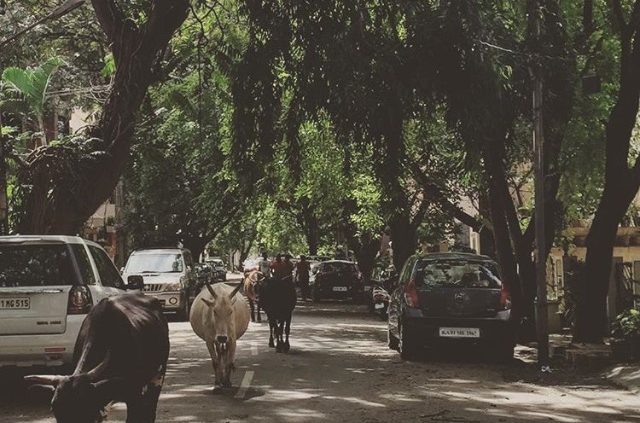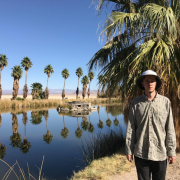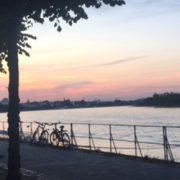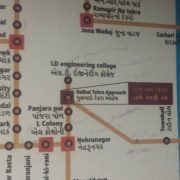Green Bengaluru
By Kate Traynor, MURP ’17
The canopy cover in Bengaluru is what struck me most on my first day here. LA’s urban ecologists dream of this kind of verdure. You don’t walk streets here, you walk tunnels. Leafy, fragrant tunnels that rock and creak. It’s hard to maintain much newcomer anxiety under all the old growth. I am thrilled to find that my bedroom window looks out over a pocket park brimming with Jacarandas, African Tulips, Coconut Palms, and a number of species I find romance in not being able to identify.
One of the most common and easily the most swoon-worthy species is the Rain Tree (Samanea Saman), whose sinewy curvature and unlikely trunk-to-canopy ratio is straight out of a Dr.Seuss production. Its name helpfully suggests its potential use as protective cover during a rainstorm. The Rain Tree’s spaghetti roots spill along the sidewalks and its green parasol spans the width of Bengaluru’s broad avenues. Shade is a surprisingly abundant resource here.
Bengaluru, India’s “garden city” and, of late, India’s “tech hub,” has seen rapid change in the past two decades. Within the first few hours of my internship, several Bengaluru lifers, describing their home city, lamented the crowding and the associated pressure on urban infrastructure. Trees, including my Rain Tree, feel this pressure as their space needs directly conflict with the building infill and expansion intended to accommodate the city’s increasing density. The trunks and limbs have also made enemies of power and utility lines and shopkeeper’s concerned with store signage visibility. This problem, of too much greenery for development, is hard to fathom coming from LA. If anything, in the land of the stinting palm, we have too much development for greenery. Of course, green space and “development” are long-term opponents, but it’s a treat to imagine green space fighting as the heavyweight for once. I offhandedly suggested this to coworkers and was energetically assured (corrected) that development is winning out.
Maybe it goes without saying, but I should observe that I am staying in a relatively affluent part of town. This green mantle is a reflection of decades, even centuries, of both public and private investment in what is essentially a fortified enclave for the elect. The canopy I experience is far from evenly distributed across Bengaluru. The colorful walls in the poor neighborhoods read as pastels from uninterrupted sun-bleaching. And the landscape I’m surrounded by bears no resemblance whatsoever to the landscape on the urban edge, where an expanse of shacks stretches savannah-like. There was no formal planning of any stripe let alone planning for landscaping here. And trunks and limbs are eradicated not so much by “development” as by human survival. The dense ecology of scrap metal and plastic suffocates all other ecologies. Green space may be a contending force in parts of Bengaluru, but the juggernaut is the trine of economic impoverishment, rural dispossession, and urban in-migration.
My trees become a little bit less winsome as it sets in that the distribution of trees stands in for a much more global and much more sinister process of resource enclosure. A process that continues to reproduce India’s breathtaking inequality. My privilege guilt throbs. I haven’t figured out what to do with it. It is near impossible to keep your heart tender and outrage raw when the scenery is so consistently demoralizing. I worry that coming home to lush canopy at the end of the day is like pulling a blanket up over my eyes, allowing me to forget at night the day’s encounters. Then again maybe my daily experience of disparity at the landscape scale preserves reality’s stridency. I feel it acutely each morning as I travel across the city to work and I try to keep Arundhati Roy’s counsel close: “To never get used to the unspeakable violence and the vulgar disparity of life around you. To seek joy in the saddest places. To pursue beauty to its lair. To never simplify what is complicated or complicate what is simple. To respect strength, never power. Above all, to watch. To try and understand. To never look away.” It hurts to not look away and I don’t know how I’ll apply the looking professionally, but I’m hoping that sitting under these Rain Trees might generate some ideas.











